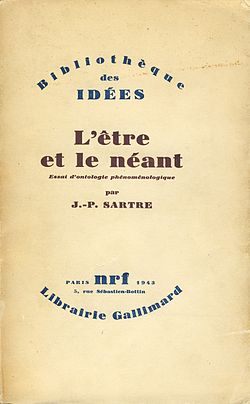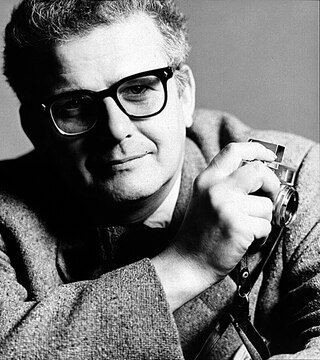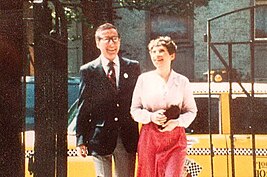Aesthetics is the branch of philosophy concerned with the nature of beauty and the nature of taste and, in a broad sense, incorporates the philosophy of art. Aesthetics examines the philosophy of aesthetic value, which is determined by critical judgments of artistic taste; thus, the function of aesthetics is the "critical reflection on art, culture and nature".

Sexual orientation is an enduring personal pattern of romantic attraction or sexual attraction to persons of the opposite sex or gender, the same sex or gender, or to both sexes or more than one gender. Patterns are generally categorized under heterosexuality, homosexuality, and bisexuality, while asexuality is sometimes identified as the fourth category.

Eli Siegel was a poet, critic, and educator. He founded Aesthetic Realism, a philosophical movement based in New York City. An idea central to Aesthetic Realism—that every person, place or thing in reality has something in common with all other things—was expressed in the title poem of his first volume, Hot Afternoons Have Been in Montana: Poems. His second volume was Hail, American Development.

Pride is defined by the Merriam-Webster dictionary as "reasonable self-esteem" or "confidence and satisfaction in oneself". The Oxford dictionary defines it as "the quality of having an excessively high opinion of oneself or one's own importance." Pride may be related to one's own abilities or achievements, positive characteristics of friends or family, or one's country. Richard Taylor defined pride as "the justified love of oneself", as opposed to false pride or narcissism. Similarly, St. Augustine defined it as "the love of one's own excellence", and Meher Baba called it "the specific feeling through which egoism manifests."

Being and Nothingness: An Essay on Phenomenological Ontology, sometimes published with the subtitle A Phenomenological Essay on Ontology, is a 1943 book by the philosopher Jean-Paul Sartre. In the book, Sartre develops a philosophical account in support of his existentialism, dealing with topics such as consciousness, perception, social philosophy, self-deception, the existence of "nothingness", psychoanalysis, and the question of free will.
Heterosexism is a system of attitudes, bias, and discrimination in favor of heterosexuality and heterosexual relationships. According to Elizabeth Cramer, it can include the belief that all people are or should be heterosexual and that heterosexual relationships are the only norm and therefore superior.

The field of psychology has extensively studied homosexuality as a human sexual orientation. The American Psychiatric Association listed homosexuality in the DSM-I in 1952 as a "sociopathic personality disturbance," but that classification came under scrutiny in research funded by the National Institute of Mental Health. That research and subsequent studies consistently failed to produce any empirical or scientific basis for regarding homosexuality as anything other than a natural and normal sexual orientation that is a healthy and positive expression of human sexuality. As a result of this scientific research, the American Psychiatric Association removed homosexuality from the DSM-II in 1973. Upon a thorough review of the scientific data, the American Psychological Association followed in 1975 and also called on all mental health professionals to take the lead in "removing the stigma of mental illness that has long been associated" with homosexuality. In 1993, the National Association of Social Workers adopted the same position as the American Psychiatric Association and the American Psychological Association, in recognition of scientific evidence. The World Health Organization, which listed homosexuality in the ICD-9 in 1977, removed homosexuality from the ICD-10 which was endorsed by the 43rd World Health Assembly on 17 May 1990.

Other is a term used to define another person or people as separate from oneself. In phenomenology, the terms the Other and the Constitutive Other distinguish other people from the Self, as a cumulative, constituting factor in the self-image of a person; as acknowledgement of being real; hence, the Other is dissimilar to and the opposite of the Self, of Us, and of the Same. The Constitutive Other is the relation between the personality and the person (body) of a human being; the relation of essential and superficial characteristics of personal identity that corresponds to the relationship between opposite, but correlative, characteristics of the Self, because the difference is inner-difference, within the Self.

Labeling theory posits that self-identity and the behavior of individuals may be determined or influenced by the terms used to describe or classify them. It is associated with the concepts of self-fulfilling prophecy and stereotyping. Labeling theory holds that deviance is not inherent in an act, but instead focuses on the tendency of majorities to negatively label minorities or those seen as deviant from standard cultural norms. The theory was prominent during the 1960s and 1970s, and some modified versions of the theory have developed and are still currently popular. Stigma is defined as a powerfully negative label that changes a person's self-concept and social identity.

Hot Afternoons Have Been in Montana: Poems is a book of poems written by Eli Siegel, founder of the philosophy of Aesthetic Realism. It was one of 13 finalists in the poetry category of the National Book Award in 1958, the year its author was nominated for the Pulitzer Prize for Poetry.

Homophobia encompasses a range of negative attitudes and feelings toward homosexuality or people who identify or are perceived as being lesbian, gay or bisexual. It has been defined as contempt, prejudice, aversion, hatred, or antipathy, may be based on irrational fear and may sometimes be attributed to religious beliefs.

Homosexuality is sexual attraction, romantic attraction, or sexual behavior between members of the same sex or gender. As a sexual orientation, homosexuality is "an enduring pattern of emotional, romantic, and/or sexual attractions" exclusively to people of the same sex or gender. It "also refers to a person's sense of identity based on those attractions, related behaviors, and membership in a community of others who share those attractions."
Richard Shusterman is an American pragmatist philosopher. Known for his contributions to philosophical aesthetics and the emerging field of somaesthetics, currently he is the Dorothy F. Schmidt Eminent Scholar in the Humanities and Professor of Philosophy at Florida Atlantic University.
The Cass identity model is one of the fundamental theories of LGBT identity development, developed in 1979 by Vivienne Cass. This model was one of the first to treat LGBT people as normal in a heterosexist society and in a climate of homophobia and biphobia instead of treating homosexuality and bisexuality themselves as a problem. Cass described a process of six stages of LGBT identity development. While these stages are sequential, some people might revisit stages at different points in their lives.
Primarily obsessional obsessive–compulsive disorder, also known as purely obsessional obsessive–compulsive disorder, is a lesser-known form or manifestation of OCD. It is not a diagnosis in the DSM-5. For people with primarily obsessional OCD, there are fewer observable compulsions, compared to those commonly seen with the typical form of OCD. While ritualizing and neutralizing behaviors do take place, they are mostly cognitive in nature, involving mental avoidance and excessive rumination. Primarily obsessional OCD takes the form of intrusive thoughts often of a distressing, sexual, or violent nature.
The Terrain Gallery, or the Terrain, is an art gallery and educational center at 141 Greene Street in SoHo, Manhattan, New York City. It was founded in 1955 with a philosophic basis: the ideas of Aesthetic Realism and the Siegel Theory of Opposites, developed by American poet and educator Eli Siegel. Its motto is a statement by Siegel: "In reality opposites are one; art shows this."

Chaim Koppelman was an American artist, art educator, and Aesthetic Realism consultant. Best known as a printmaker, he also produced sculpture, paintings, and drawings. A member of the National Academy of Design since 1978, he was president of the Society of American Graphic Artists (SAGA), which presented him with a Lifetime Achievement Award in 2004. He established the Printmaking Department of the School of Visual Arts in 1959, and taught there until 2007.

Ken Kimmelman is an American filmmaker, animator, and Aesthetic Realism consultant. He is the president of Imagery Film, Ltd. and is known for his films opposing racism and prejudice, including The Heart Knows Better, a public service film for which he received a National Emmy Award and Brushstrokes, produced for the United Nations. Both films were inspired by Aesthetic Realism, the philosophy whose founder, Eli Siegel, identified contempt, "the addition to self through the lessening of something else" as the cause of racism and all human injustice. Kimmelman is also noted for his Poetry film, Hot Afternoons Have Been in Montana, based on the prize-winning poem by Eli Siegel. Historian Howard Zinn said of this film, "It matches, in its visual beauty, the elegance of Siegel's words, and adds the dimension of stunning imagery to an already profound work of art."

The following outline offers an overview and guide to LGBTQ topics:

Nat Herz (1920–1964) was an American photographer, poet, and writer.















